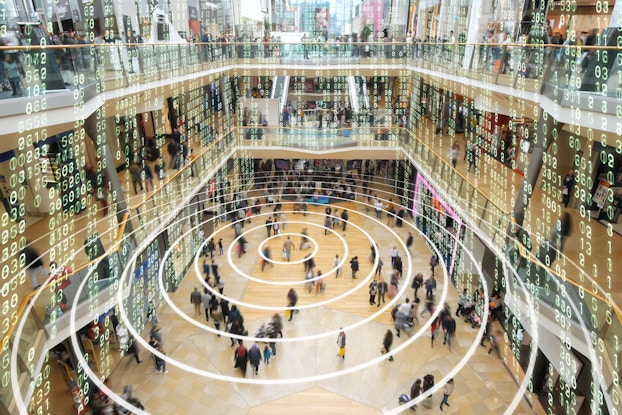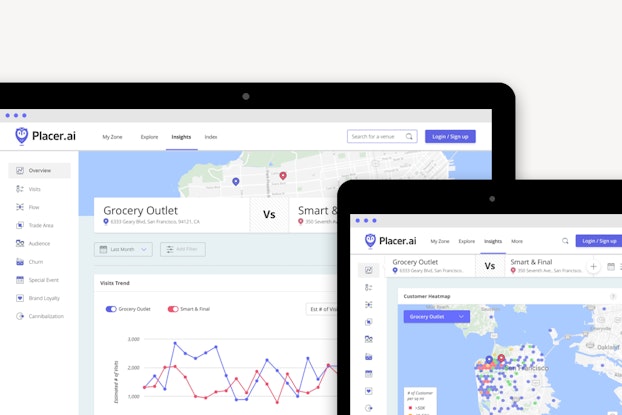
Will adding a restaurant in a clothing store make customers hungrier to buy? Is a mall a good location for a microbrewery? And which fast-food chain is winning the chicken sandwich war?
Mobile location analytics, the science of figuring out where shoppers spend their time based on the movement of their cellphones, is being used to answer those questions, and to help retailers, restaurants and developers make smarter decisions about where they open and close stores.
Mobile analytics firms say their data helps level the playing field between physical stores and e-commerce sites.
Online retailers know how long their customers stay on their site, which search terms led them to the site and where they go online after leaving the site.
“For a really long time, businesses that are centered online had this unique kind of cheat code of data,” Ethan Chernofsky, vice president of marketing at the two-year-old Silicon Valley-based location analytics company Placer.ai, told CO—. They could test new ideas and course-correct quickly, he said.
“In the offline world, it was the opposite,” he said. Retailers had to invest in stores leases, inventory, staff, “and yet you didn’t really have a lot of data to maximize the chances of your success,” he said.
Location analytics, Chernofsky said, empowers businesses “so they can reduce risk and increase their likelihood of succeeding.”
Placer.ai used mobile data in a report designed to illustrate that Lululemon’s flagship store in Chicago, which includes a restaurant, is drawing more shoppers and keeping them in the store longer. Its data convinced a microbrewery to open in a California mall. And it has measured how chicken sandwich promotions this summer and fall boosted traffic at Popeyes and KFC.
Analytics
Location analytics companies are aiding brick-and-mortar retailers in finding out where their customers are spending their time. Read on for a beginner's guide to tracking your website's analytics.

New tech that tracks return visitors
Mobile analytics firms take location information gathered by cellphone carriers (provided by consumers who click “allow” when asked if an app or website can use their current location) and use artificial intelligence and algorithms to draw projections from the movements of a limited number of phones to the population at large.
ShopperTrak, which, in the pre-cellphone era, pioneered the use of in-store devices to count shoppers, is now using mobile device detection and other analytics to give retailers a means of “measuring the entire shopper journey,” Dan Mahoney, general manager, ShopperTrak Americas, told CO—.
ShopperTrak is part of the retail solutions portfolio of Sensormatic Solutions, a division of Johnson Controls.
The new technology “can determine whether shoppers are returning visitors or not, and if a shopper is a returning customer how often does that customer return,” Mahoney said, along with time spent in the store and which part of the store the shopper visits.
Enhanced mobile location intelligence that's anonymized and clustered helps retailers in many ways by providing richer data, Paula Rosenblum, managing partner at retail tech research firm RSR Research told CO—. For one, it helps them to better understand the demographics associated with their stores, she said.
“You can look at shoppers typical routes to help improve site selection," Rosenblum said. And retailers can discover, for example, “if a customer is shopping here, do they live nearby, or is it just part of their route to and from work, or to and from school."
Privacy concerns
With those insights, retailers and mobile analytics providers must be careful very around privacy, Rosenblum said. “There have been all of these assumptions that consumers don’t care about privacy,” she said. “That’s totally not true.”
Placer.ai, Chernofsky said, only sees anonymous aggregate data, and cannot connect a cellphone location with a specific consumer. It also doesn’t use the data it collects to advertise to consumers.
Retailers want to take mobile location data to the next step and use it to connect with shoppers when they are in a store, or nearby, through ads and promotions sent to mobile phones, although not many are doing it at this point, Rosenblum said.
Privacy concerns, and the costs involved in being able to push messages to shoppers when they walk in a store or drive by, are some of the hurdles retailers face before they can take that next step, she said.
CO— aims to bring you inspiration from leading respected experts. However, before making any business decision, you should consult a professional who can advise you based on your individual situation.
Want to read more? Be sure to follow us on LinkedIn!
CO—is committed to helping you start, run and grow your small business. Learn more about the benefits of small business membership in the U.S. Chamber of Commerce, here.







